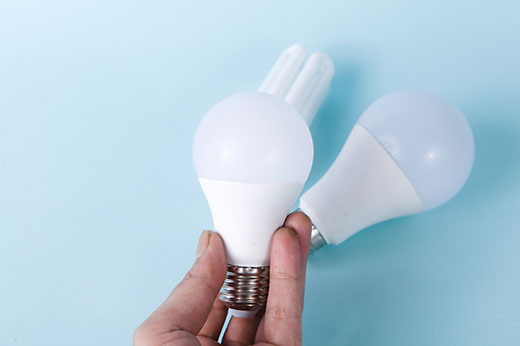
David Carter, direct of the Kansas Energy Program, says saving money on the energy bill starts with knowing whether costs are trending up or down.
Tips to save money on your energy bill
Director of Kansas Energy Program suggests monitoring use of household items
Aug. 11, 2023
K-State Research and Extension news service
MANHATTAN, Kan. —As rising costs continue to hit Americans’ pocketbook, the director of the Kansas Energy Program housed at Kansas State University says some common-sense measures can help homeowners save on their energy bill.
David Carter says a good place to start is knowing what your costs are, and whether they are trending up or down. He said the cost per kilowatt hour (kWh) that homeowners see on their energy bill can change independently of the other rates (e.g., transmission charge, customer charge, fuel charge and more).
“To figure out your cost per kilowatt hour, take the electricity charge divided by the electricity used,” he said. “This will help you figure out how much each kilowatt of energy is costing you.”
Then, he said, start monitoring how much you use those household items that are major energy draws, including:
- Air conditioner.
- Stove and oven.
- Incandescent lights.
- Televisions.
- Furnace (during the winter).
The geographical location of the home also has an impact on the energy bill, according to Carter.
“In a rural area, your house will be isolated, which allows it to be more affected by the environment,” he said. “In an urban area, you are more protected and, if you live in an apartment, you can benefit from the floor above or beneath you. Alternatively, urban areas can also be subject to the urban heat island effect, which would increase temperatures and could result in higher energy costs.”
Additional tips to help save energy and money include:
- Keep items that draw electricity turned off as long as possible.
- Use automatic settings to turn appliances on and off.
- Install LED lights instead of incandescent.
- Turn the lights off when not using them.
- Use fans to circulate cool air.
- Install and use a programmable thermostat.
- Install insulation or weather-stripping around doors and windows.
- Apply for the Rural Energy for America Program (available to farmers and small businesses in rural areas; funding cannot be used for residences)
Carter recommends a publication on 16 ways to cut energy costs and save money to help homeowners. That publication is available online.

